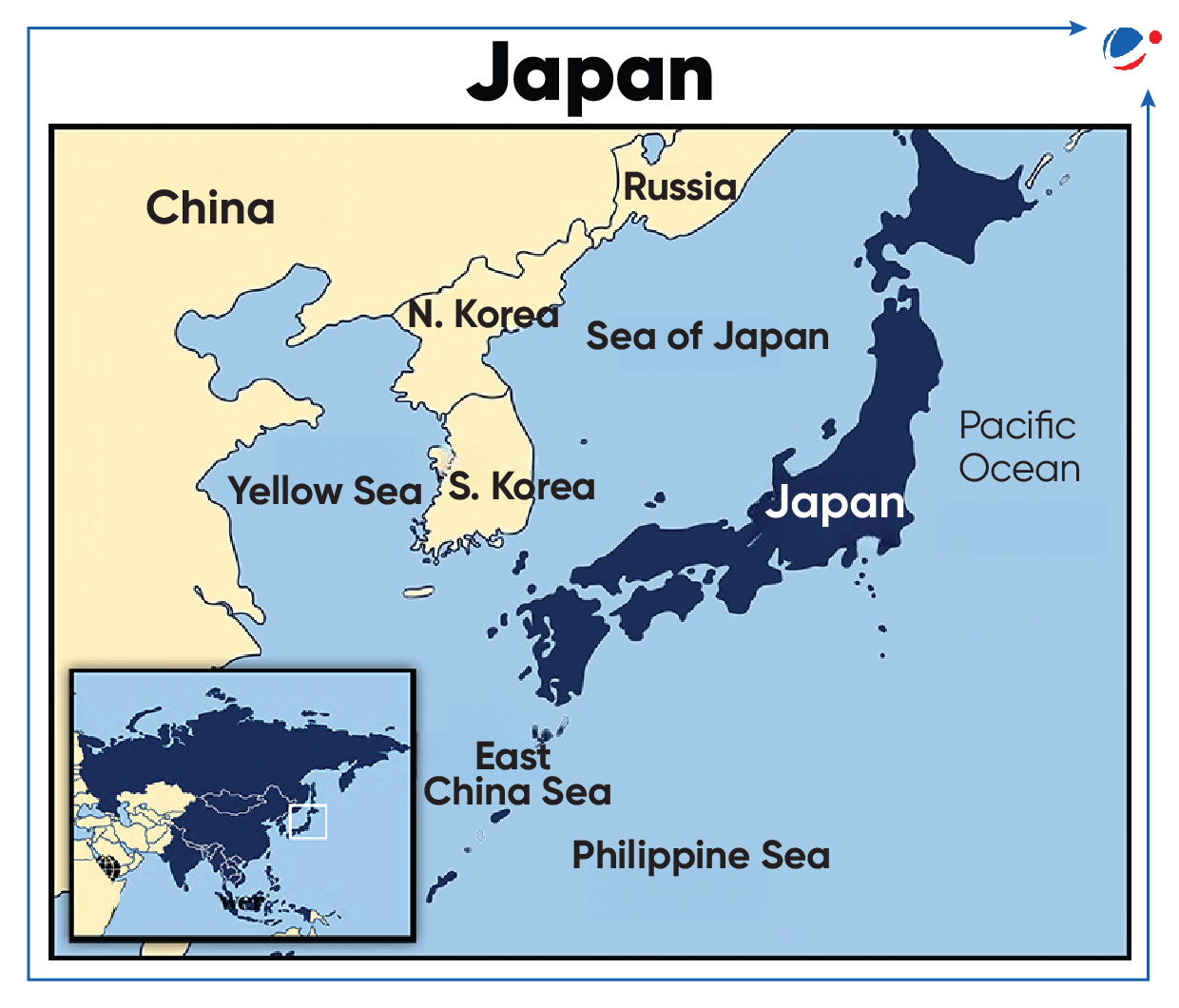Why in the News?
Prime Minister of India and Japan held a bilateral meeting on the side-lines of the G-7 Summit in Apulia, Italy.
More on the News

- Both countries discussed ways to deepen cooperation further, adding new and emerging areas, and strengthening B2B and P2P cooperation.
- Both countries noted that India-Japan Special Strategic and Global Partnership is in its 10th year.
Significance of India-Japan Bilateral Relationship
For Both Countries
- Convergence of Strategic Interests: Both Japan's 'Free and Open Indo-Pacific' (FOIP) strategy and India's Indo-Pacific Oceans Initiative (IPOI) share common concerns regarding China's ongoing military and political interventions in the Indo-Pacific, specifically in South China Sea.
- India and Japan are also participating in the Supply Chain Resilience Initiative to counter China's dominance of supply chains in the Indo-Pacific.
- Strategic Connectivity: Examples of partnership in enhancing connectivity-
- Linking South Asia to Southeast Asia through India's ''Act East'' and Japan's ''Partnership for Quality Infrastructure" policy.
- Asia-Africa Growth Corridor (AAGC) aims to bring East Asia, Southeast Asia and South Asia closer to Africa
- India Vision 2025 involves development of Northeast region and acts as a convergence point for India's Act East Policy and Japan's FOIP policy.
- Defence Relationship: The acquisition and Cross-Servicing Agreement (ACSA) brings closer cooperation between Armed forces of India and Japan.
- Example-Military Exercises: Dharma Guardian, Shinyuu Maitri, JIMEX.
- Important trade partners: Bilateral Trade between both countries was US$ 21.96 billion (FY 2022- 23),
- In 2011, India and Japan successfully concluded a historic bilateral free trade agreement – the Comprehensive Economic Partnership Agreement.
- Energy Cooperation: E.g., India-Japan Clean Energy Partnership (CEP) was announced in 2022 for economic growth and addressing climate change.
- Othe examples: India-Japan Agreement for Cooperation in the Peaceful Uses of Nuclear Energy (2017)
- Reformed Multilateralism: Both countries support reforms at UNSC and are also part of multiple global groupings such as Quad, G20, G4 and also focus on non-proliferation and disarmament issues
- Cooperation in Science & Technology missions: E.g., ISRO and JAXA are working on a joint Lunar Polar Exploration Mission (LUPEX).
Significance for India
- Infrastructural development: E.g., collaboration on projects such as Mumbai-Ahmedabad High Speed Rail project.
- Foreign Investment: Target of 5 trillion yen investment in India (2022-2027).
- Transformation of India's manufacturing: Through platforms like India-Japan Industrial Competitiveness Partnership.
- Skill Development: E.g. Technical Intern Training Programme (TITP) and Specified Skilled Worker (SSW) initiative of Japan
- Official Developmental Assistance: Japan is largest bilateral donor to India.
Significance for Japan
- Demography: India can offer Human Resources to Japan to tackle its declining population
- Investment opportunities: In sectors such as automobiles, textile, electronic system, food processing.
- Raw Material: Iron ore helped in Japan's recovery from devastation post World War II
- Large Market: India presents a large market for Japanese goods.
Challenges in Indo-Japan Relationship
- Bilateral Trade: India-Japan trade remains low with the domination of India's imports even after CEPA.
- It is mainly on account of restrictive trade practices such as stringent quality standards and non-tariff barriers which increases cost burden to export for Indian companies and products.
- Moreover, Japanese FDI in India small compared to Japan's total outward FDI.
- Strategic divergence:
- Divergent approaches in tackling China: India has been vocal about China's actions at the Line of Actual Control (LAC) but restrained in directly criticising China's actions in the South China Sea, Taiwan Straits etc.
- Stand on Russia-Ukraine war: Japan has joined sanctions against Russia, while India has refused to do so.
- Japan is part of the U.S.'s alliance, unlike India.
- India boycotted 'Osaka Track' suggested by Japan at G20 summit (2019)
- Osaka Track aimed to create plurilateral negotiation on digital trade with intention of standardisation of rules on cross-border data flows, removal of prohibitions on data localization etc.
- Delay in Implementation of Projects: Such as Asia Africa Growth Corridor and bullet train project between Ahmedabad and Mumbai.
Steps to be taken
- Accelerate trade and investment by review of implementation of CEPA and taking a relook at the rules of origin to create a stable and consistent trade policy regime.
- Enhanced defense collaboration with focus on enhanced shared security.
- Coherence in approach towards Indo-Pacific at various platforms such as QUAD will foster strength in freedom of navigation and rule based order especially in the Indo-Pacific region.
- Deepen cooperation in new and emerging areas such as modern biology, biotechnology and health care, agriculture, nano-science, information and communication technology, robotics.
- Enhanced dialogue and exchanges to strengthen Business and Business and People to People cooperation.
Conclusion
Both countries should recognize the need for concerted efforts to utilize the natural partnership and translate positive developments into an 'Arc of Advantage and Prosperity' involving growth, prosperity, stability and closer integration in Asia.





